Did you know some tiny freshwater insects build their own “armor” from river pebbles and shell fragments? Those are caddisfly larvae (order Trichoptera)—one of many freshwater invertebrates with remarkable survival tricks. Like oceans, freshwater ecosystems (rivers, lakes, streams, ponds, wetlands) are bursting with biodiversity, where vertebrates and invertebrates coexist and evolve diverse strategies.

This guide groups fishes, freshwater stingrays, mammals, birds, reptiles & amphibians, and invertebrates, with safety and conservation tips at the end.
Freshwater fishes
Mammals that live in fresh water
Birds of rivers, lakes & wetlands
Freshwater reptiles & amphibians
Freshwater invertebrates
Safety & conservation tips
Quick species checklist (>35)
Fishes are the most numerous animals in inland waters. Some are familiar food species; others are famed for danger or sheer size.
Common / food fishes:
Atlantic salmon (Salmo salar)
Brown trout (Salmo trutta)
European sturgeon (Acipenser sturio, CR)
“Dangerous” (usually context-dependent):
Red-bellied piranha (Pygocentrus nattereri)—schooling fish, most incidents involve stress or scarce food
Electric eels (Electrophorus spp.)—can deliver strong electric discharges
Bull shark (Carcharhinus leucas)—euryhaline; can travel far upriver
River giants:
Mekong giant catfish (Pangasianodon gigas)
Longnose gar (Lepisosteus osseus)
Nile perch (Lates niloticus)
Other widespread/invasive or ornamental:
Common carp (Cyprinus carpio)
Nile tilapia (Oreochromis niloticus)
Goldfish/Koi (Carassius auratus)
Guppy (Poecilia reticulata)
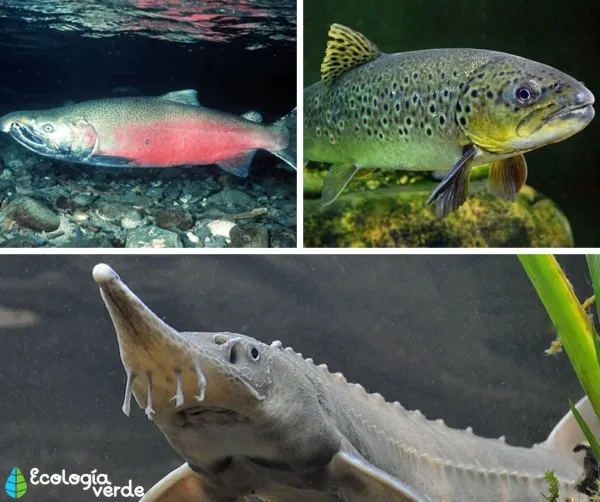
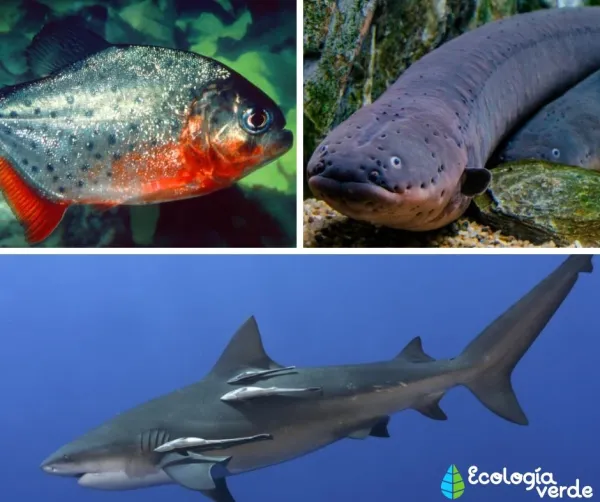
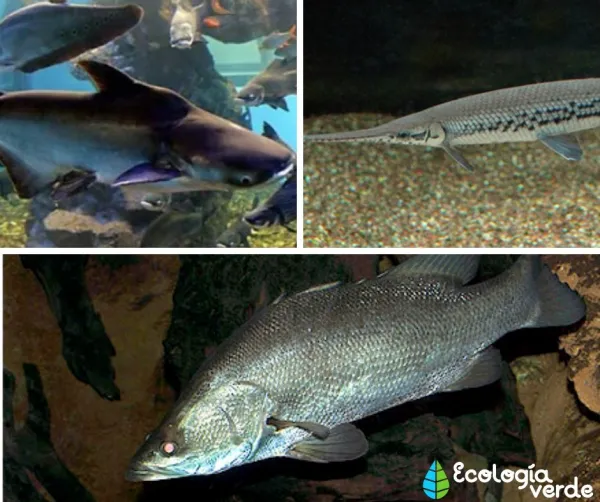
South America’s Potamotrygonidae are true freshwater cartilaginous fishes. From the Amazon basin to the Río de la Plata, they thrive in warm rivers. Like marine rays, they have a venomous tail spine—give them space.
Motoro stingray (Potamotrygon motoro)
Xingu/black-and-white polka-dot stingray (Potamotrygon leopoldi)
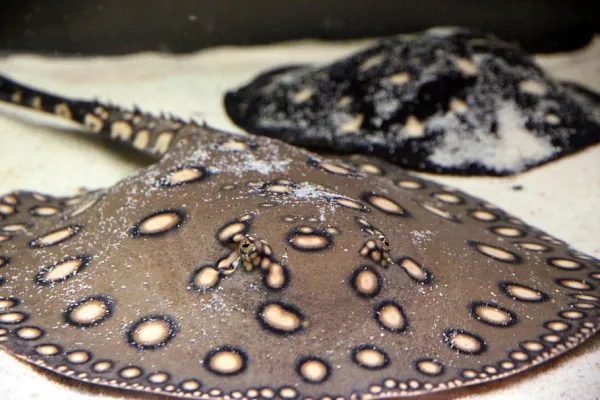
Many mammals spend most or all of their lives in fresh water, or are strongly tied to it.
Eurasian otter (Lutra lutra) and other otters (subfamily Lutrinae)
North American beaver (Castor canadensis) / Eurasian beaver (Castor fiber)—famous dam builders
Amazon river dolphin (Inia geoffrensis)
Yangtze finless porpoise (Neophocaena asiaeorientalis)
Amazonian manatee (Trichechus inunguis; genus Trichechus also includes Caribbean and African Manatees-Are-Endangered.html">manatees)
Hippopotamus (Hippopotamus amphibius)
Platypus (Ornithorhynchus anatinus)—semiaquatic monotreme
Capybara (Hydrochoerus hydrochaeris)—largest rodent, semi-aquatic

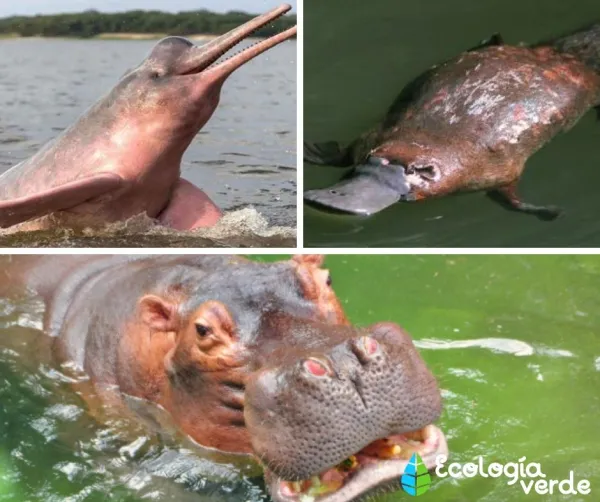
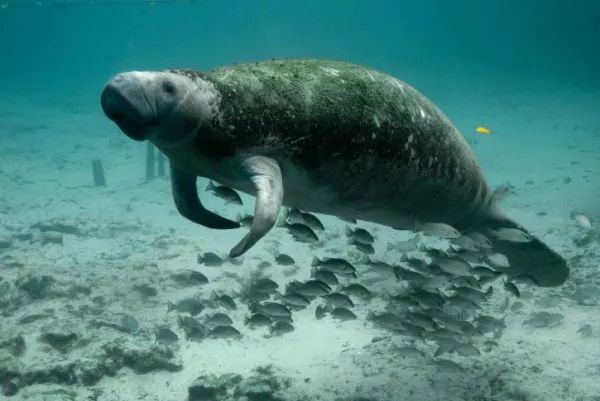
Conservation note: Manatees and many river dolphins/porpoises face habitat loss, vessel strikes, and fishing-gear entanglement.
Freshwater habitats provide food, shelter, and breeding sites for countless birds.
Mallard (Anas platyrhynchos)
Swans (Cygnus spp.)
Greylag goose (Anser anser) and other Anserinae
Grey heron (Ardea cinerea)
Common crane (Grus grus)
Common kingfisher (Alcedo atthis; family Alcedinidae)
Cormorants (Phalacrocorax spp.)
Roseate spoonbill (Platalea ajaja)
Flamingos (Phoenicopterus spp.; many use saline/brackish lakes)

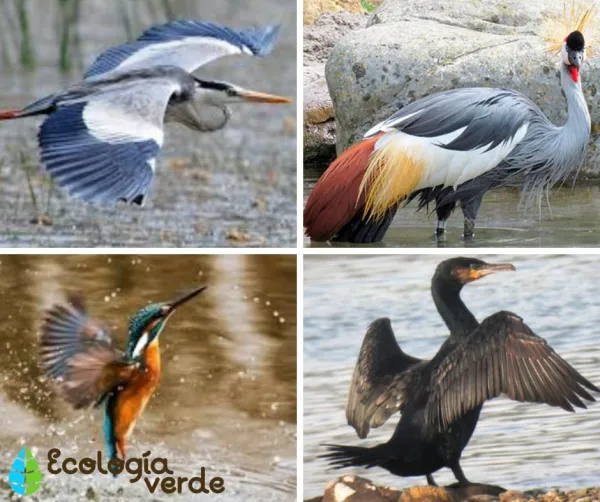
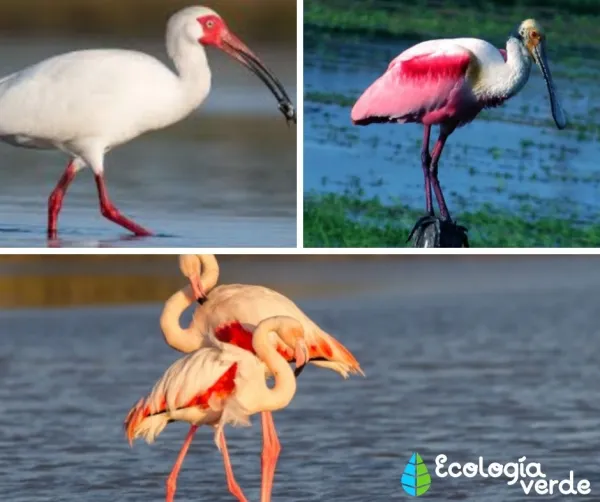
Reptiles:
American alligator (Alligator mississippiensis)
Green anaconda (Eunectes murinus)—massive constrictor common in slow waters
Red-eared slider (Trachemys scripta elegans)—globally invasive pet release
Chinese softshell turtle (Pelodiscus sinensis)
Map turtles (Graptemys spp.)
Amphibians:
American bullfrog (Lithobates catesbeianus)—invasive in many regions
Chinese giant salamander (Andrias davidianus)
Oriental fire-bellied newt (Cynops orientalis) and other newts (order Caudata)
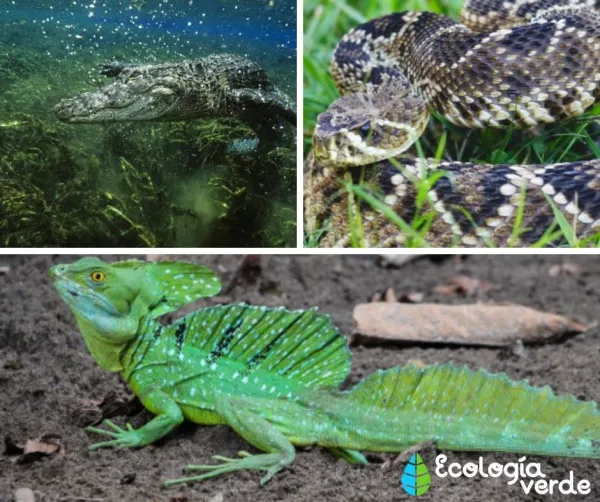
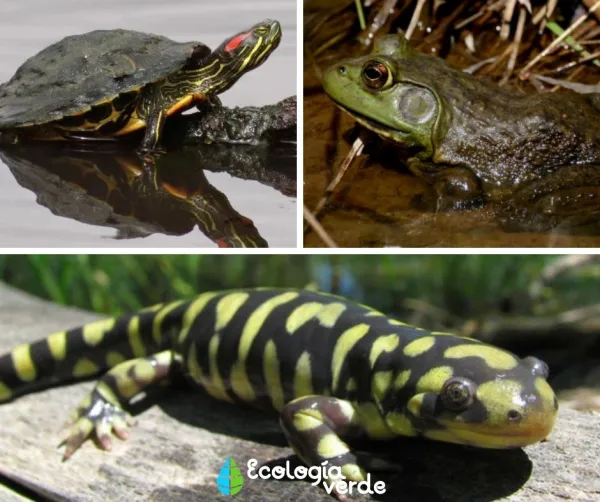
Invertebrates power food webs and are key bioindicators of water quality.
Annelids & mollusks:
Leeches (Hirudinea)
Ramshorn snail (Planorbella trivolvis)
Freshwater mussels (family Unionidae)
Chinese mystery snail (Cipangopaludina chinensis)
Crustaceans:
Red swamp crayfish (Procambarus clarkii)—often invasive
Giant river prawn (Macrobrachium rosenbergii)
Long-arm river shrimp (Macrobrachium acanthurus)
Chinese mitten crab (Eriocheir sinensis)—catadromous life cycle (river to sea to spawn)
Aquatic insects & zooplankton:
Caddisfly larvae (Trichoptera): build pebble/shell “cases”
Mayfly nymphs (order Ephemeroptera)
Dragonfly/damselfly nymphs (order Odonata)
Midge larvae (family Chironomidae)
Water fleas (Daphnia spp.)
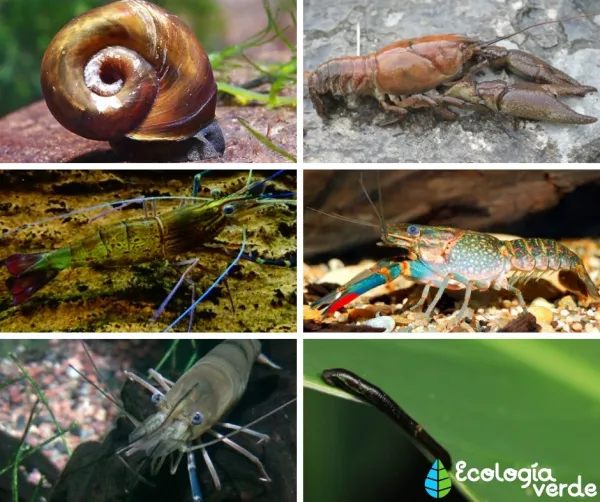
Many taxa above are used in biomonitoring (e.g., EPT index) because they’re sensitive to pollution and habitat change.
Keep your distance: Electric eels can deliver powerful shocks; river stingrays have venomous spines; large crocs/boas can be dangerous.
Don’t release pets: Red-eared sliders, crayfish, tilapia, and others disrupt native communities.
Protect wetlands: Reduce pesticide/fertilizer runoff; support wetland restoration and protected areas.
Watch responsibly: No feeding or chasing; stay on boardwalks/trails; use binoculars.
Fishes (14): Salmo salar, S. trutta, Acipenser sturio, Pygocentrus nattereri, Electrophorus spp., Carcharhinus leucas, Pangasianodon gigas, Lepisosteus osseus, Lates niloticus, Cyprinus carpio, Oreochromis niloticus, Carassius auratus, Poecilia reticulata, (+ others as relevant)
Stingrays (2): Potamotrygon motoro, P. leopoldi
Mammals (9): Lutra lutra, Castor canadensis, Castor fiber, Inia geoffrensis, Neophocaena asiaeorientalis, Trichechus inunguis, Hippopotamus amphibius, Ornithorhynchus anatinus, Hydrochoerus hydrochaeris
Birds (9): Anas platyrhynchos, Cygnus spp., Anser anser, Ardea cinerea, Grus grus, Alcedo atthis, Phalacrocorax spp., Platalea ajaja, Phoenicopterus spp.
Reptiles/Amphibians (6): Alligator mississippiensis, Eunectes murinus, Trachemys scripta elegans, Pelodiscus sinensis, Lithobates catesbeianus, Andrias davidianus
Invertebrates (12): Trichoptera, Ephemeroptera nymphs, Odonata nymphs, Chironomidae larvae, Daphnia spp., Hirudinea, Planorbella trivolvis, Unionidae, Cipangopaludina chinensis, Procambarus clarkii, Macrobrachium rosenbergii, M. acanthurus
Bibliography
López, L. et al. (1987). Checklist of freshwater fishes of Argentina. Aquatic Biology, Volume 12, pp: 1-50.
Margalef, R. (1948). On the diet of freshwater animals. Spanish Journal of Physiology. Volume 4 (3), pp: 207-213.
Coronado, N. & Pérez, R. (2009). Taxonomic checklist of caddisflies (insecta: Trichoptera) from the streams south of the municipality of Morelia, Michoacán. Biologies Journal, Volume 11, pp: 139-143.
animal tags: freshwater
We created this article in conjunction with AI technology, then made sure it was fact-checked and edited by a Animals Top editor.